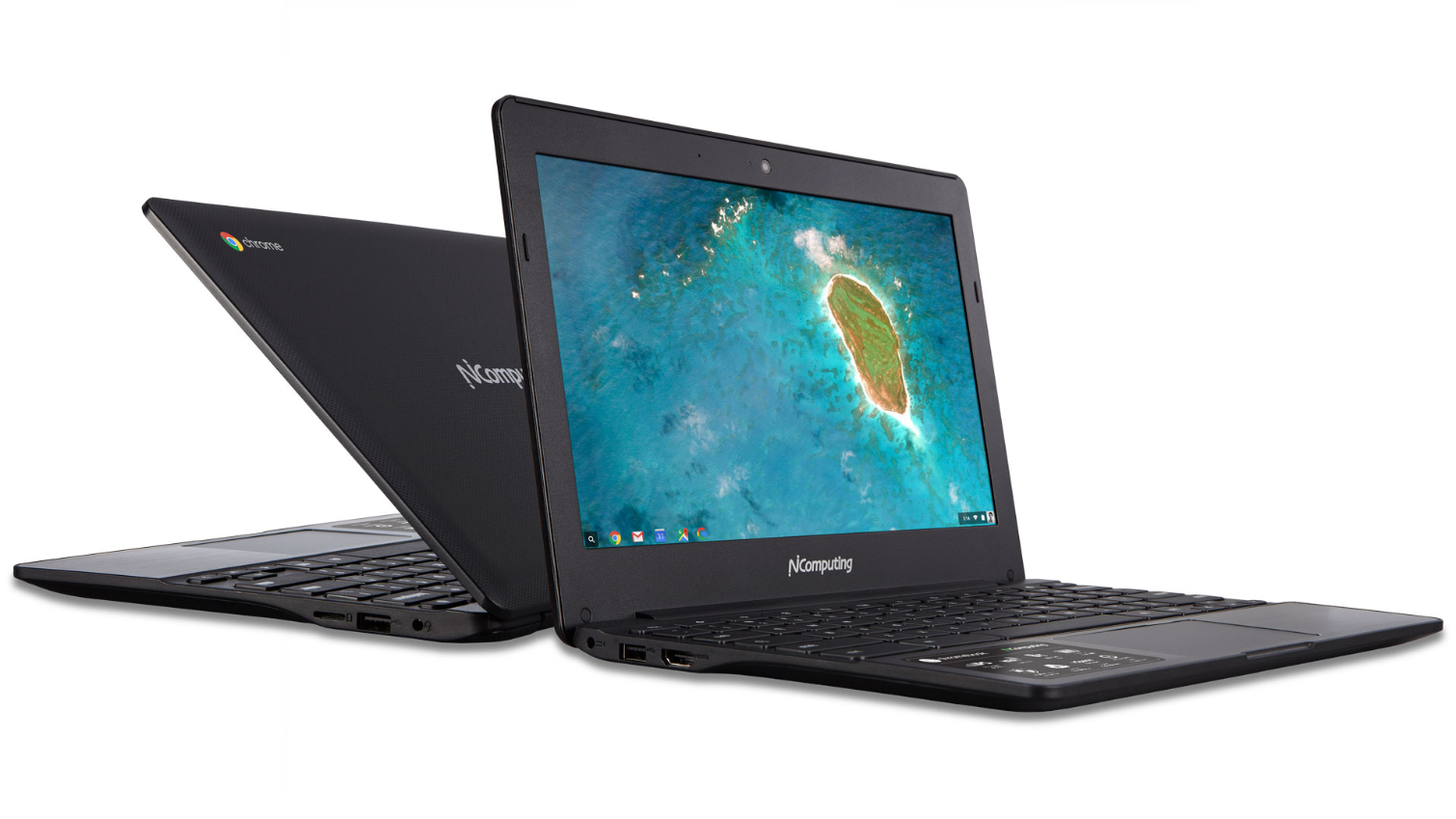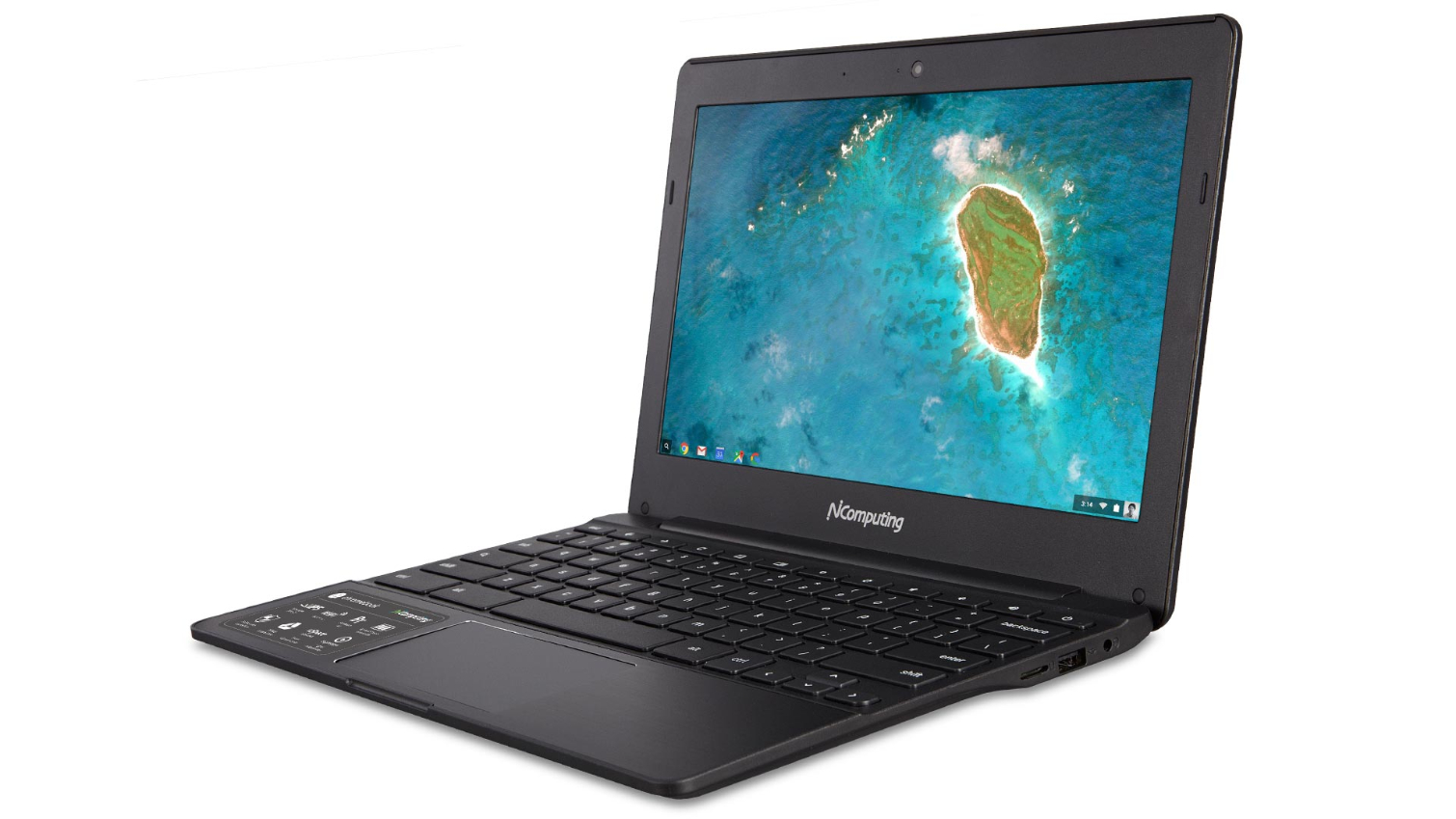Windows Virtualization Comes To Chromebooks
NComputing ported its vSpace virtualization technology to Chrome OS, effectively enabling Windows 10 to run on Chromebooks in a virtual machine.
Primarily, it’s targeted at educational institutions as a way to help them more easily migrate away from Windows to ChromeOS-based systems. The company also launched two new Chromebooks alongside the application to take advantage of the remote desktop virtualization technology.
To be fair, vSpace is not new in the education industry, but until now it was incapable of running on ChromeOS. This software is highly advantageous to Chromebooks, as it enables users to remotely connect to a virtual Windows desktop that is maintained by NComputing. From here, the user can run essentially any Windows-based application.
This feature is key to expanding the market share of Chromebooks in the education industry. These systems are already heavily used in schools due to their low cost and inherent security features, but there are some applications that students and teachers need to use that are simply available only on Windows. By using vSpace, this problem is easily ameliorated.
There is a caveat to using this software, however, in that it is not free. NComputing will make the software free for one year on its new Chromebook CX110, but after that there is a $50 annual license fee. NComputing offers vSpace for Chromebooks made by other manufacturers, but the additional $50 per year running cost may make a Windows-based PC a more sound long-term investment.
The Chromebook CX110 that NComputing released today uses a 1.8 GHz ARM Cortex-A17 quad-core processor. The system also has 16 GB of eMMC storage and 4 GB of DDR3L. NComputing opted to use a fairly common 11.6-inch 1366x768 display on the system. The company also has a slightly less expensive model available, the CX110, but it has just 2 GB of DDR3L.
Both systems should be available on NComputing’s website now. The CX110 retails for $229, but the CX110 model isn’t showing up at the time of writing, and we are unable to determine its price.
Get Tom's Hardware's best news and in-depth reviews, straight to your inbox.
Follow Michael Justin Allen Sexton @EmperorSunLao. Follow us on Facebook, Google+, RSS, Twitter and YouTube.
-
PhilFrisbie This is not what most would call virtualization on Chrome. This is simply a remote access application connecting to a virtual copy of Windows running on a server. This is no different than what I can do at home with VNC.Reply -
none12345 This is not allowing windows to run on chrome. Its remote desktop. Rather different.Reply -
wifiburger when I hear Windows Virtualization, all I can think is my poor xbox one that runs 3 versions of Windows 10 at the same time ! and yeah...Reply -
CajunMoses I don't understand. I use Chrome Remote Desktop to view my Windows PC's Desktop whenever I feel the need. Is this supposed to be more like when I use Citrix Receiver to access one of the virtual terminal sessions that my company has configured as Windows Desktops, except that this is somehow specially packaged for schools?Reply -
PhilFrisbie ReplyI don't understand. I use Chrome Remote Desktop to view my Windows PC's Desktop whenever I feel the need. Is this supposed to be more like when I use Citrix Receiver to access one of the virtual terminal sessions that my company has configured as Windows Desktops, except that this is somehow specially packaged for schools?
I think that about sums it up. A rather misleading article title here at Tom's. . . -
dthx Miss-use of the virtualization buzzword as often, this chrome feature is nothing more than RDP. Years ago, you could already use the same method to fool people by making them believe that you just installed Windows on an iPad... nothing new here ;-)Reply

